Статьи. Рубрика в журнале - Schole. Философское антиковедение и классическая традиция
Статья научная
The article makes an assumption about a probable reference to Petronius' Satyricon, occurring in Federico Fellini's novel A Marriage Agency (Un'agenzia matrimoniale), which is part of the anthology film Love in the City (L'amore in città, 1953) made by a group of Italian film directors. Many a time did the Italian film maker admit that he had discovered Petronius as early as his years at the lyceum in Rimini. The author of the article adduces arguments testifying to a possible influence Petronius may have had on Fellini; he draws parallels between the ancient horror-story told by a freedman, Niceros, at the feast held by Trimalchio (Sat. 61-62) and the modern story created by Federico Fellini. These parallels in the stories about werewolves (versipellis), found in Petronius' Satyricon and in Fellini's A Marriage Agency, are credible coincidences. Fellini chose the tale about a werewolf, which may have been inspired by Petronius' novel that had had a great influence on him in his green years. And the horror-story about a lycanthrope told by Niceros is undoubtedly one of the most memorable ones at the cena Trimalchionis. If the assumption in the article is true, then the story A Marriage Agency is Fellini's yet another film that, along with Satyricon, features the Petronius subject, and, what is most important, this happened half a decade before his ‘historiographic' masterpiece.
Бесплатно
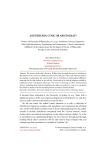
Antisthenes: cynic or aristocrat?
Рецензия
Review of: Kennedy, William John, ed. (2017) Antisthenes' Literary Fragments: Edited with Introduction, Translations, and Commentary. A thesis submitted in fulfilment of the requirements for the degree of Doctor of Philosophy. Faculty of Arts, University of Sydney. (https://ses.library.usyd.edu.au/bitstream/2123/16595/1/Kennedy_WJ_Thesis%20Final.pdf). The review deals with a thesis by William John Kennedy devoted to Antisthenes. The authors of the review are chiefly interested in the first part of the work where Kennedy is attempting to substantiate his controversial view on Antisthenes' philosophical affiliation, asserting that he had nothing to do with the Cynics and in his ethical judgment abided by traditional tenets of Athenian aristocracy. The review is focusing on those hermeneutical devices, including rather biased translations that allow the author to come to a conclusion that breaks so starkly with the standard position in modern Classical studies.
Бесплатно
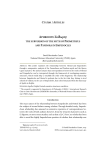
Aphrodite : the subversion of the myth of Prometheus and Pandora in Empedocles
Статья научная
This article examines the relationship between Hesiod and Empedocles through a comparative analysis of the Prometheus and Pandora myth and the Queen Cypris narrative. The author sustains that correspondences between the works of Hesiod and Empedocles can be interpreted through the framework of overlapping narrative structures, which would help to establish the order of the fragments. The relationship between Empedocles and Hesiod is polemic due to the fact that they belong to rival schools of wisdom. In the case of Empedocles, that school emanated from the Sanctuary of Apollo in Delphi.
Бесплатно
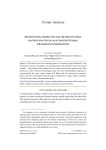
Статья научная
The article serves as a starting point for a research project dedicated to the dichotomy of private and public, and its implications and dynamics in the late Roman republic - early Empire. The primary focus is on the roman private spaces in the villas and houses of the Vesuvian archaeological area. The main methodological approach is represented by the ‘space syntax” theory of B. Hillier and the “movement as memory” theory of D. Favro developed within the logics of Spatial Turn studies, further refined by A. Russel in her works on Roman public space.
Бесплатно

Статья научная
В статье исследуется учение византийского философа и богослова Максима Исповедника (c. 580-662) о воле и волевом акте. Анализируется группа понятий, содержание которых Максим обсуждает применительно к этапам и составляющим процесса воления. Показано, что сердцевину понятийного аппарата, на основе которого Максим, вовлеченный в христологическую полемику с монофелитами, строит свое учение о воле, составляют термины, обсуждаемые Аристотелем в «Никомаховой этике» III, 4, 1111b 4 - 7, 1113b 22. Также реконструируется учение Максима о естественной и избирательной волях человека.
Бесплатно
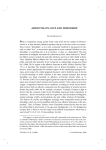
Aristotle on love and friendship
Статья научная
David Constant (Brown University, Providence, USA) presents a small paper entitled "Aristotle on Love and Friendship," in which he shows that, contrary to the opinion of many ancient scholars, the term philia in Aristotle means selective and effective relations between people, and not ties like kinship, conditioned by reciprocal obligations and not assuming an effective element as an essential characteristic. In addition, the author solves the ambiguity problem of the word philia, which can mean both "love" and mutual affection, characteristic of friendship.
Бесплатно
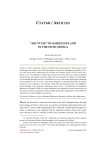
Ars vitae in iamblichus and in the stoic Seneca
Статья научная
Seneca expounds a theory of therapy and teaching with the ultimate goal of self knowledge and wisdom. Some of his techniques are based on Pythagorean principles or derive ideas from them, among them the focused and constant ascesis of self control. Iamblichus in De Vita Pythagorica exhibits great interest on the fact that mans inherent abilities along with the aid of proper education suffice for his attainment of wisdom. For both thinkers, knowledge through practice is considered to be one of the major philosophical demands in the perspective of an ars vitae. The human being has to canalize himself into the modeling of a new way of living, an art of living which will contribute decisively to the fulfillment of his teleology, to his perpetual eudaimonia (bene vivere). The admittance of individual differences in peoples ability to reform themselves only signifies the more intense effort of the teacher towards a purification of their intellect and greater engagement of the individuals volition but not their inability for correction.
Бесплатно
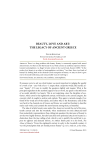
Beauty, love and art: the legacy of ancient Greece
Статья научная
There is a deep problem with beauty. Beauty is commonly equated with sexual attractiveness. Yet there is also the beauty of art, which arouses an aesthetic response of disinterested contemplation. As Roger Scruton writes in his recent book, Beauty (2009): “In the realm of art beauty is an object of contemplation, not desire.” Are there, then, two kinds of beauty? By looking back at the classical Greek conception of beauty, we may see how it gave rise to the modern dilemma, and some possible ways of resolving it.
Бесплатно

Bee Swarms and New Polities: The Influence of Plato’s Laws on Virgil’s Aeneid
Статья научная
The influence of Plato on Virgil has been the subject of research into the sources for the Aeneid. Plato’s longest work, the Nomoi or Laws, has not received attention as a possible inspiration for Virgil. Close study of certain passages will demonstrate that Plato’s use of bee imagery in particular as part of his metaphorical description of the process by which new polities are established may have been influential on Virgil’s artistic presentation of the development and foundation of what would develop into the Lavinium of the future.
Бесплатно
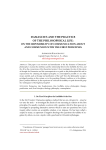
Статья научная
This paper is an overview and introduction to the key elements of Damascius’ philosophy. I examine the attributes and the relationship between the Ineffable, the One, and the All as the cornerstones of his theoretical system. I then investigate the role of this system of thought for Damascius and his contemporaries as a guide to the philosophical life and its repercussions for attaining the highest principles. Is contemplation possible or are other means needed, such as theurgy and purification of the soul? Does the philosopher occupy a privileged position in this system, as in the preceding Platonic tradition or is the philosopher’s position different, by the experience of void and the inability to speak about and grasp the ‘nothingness’ of the highest principles?
Бесплатно

De arte metrica беды досточтимого и христианизация образования в раннем Средневековье
Статья научная
В статье показано, какие тексты христианских поэтов Беда Досточтимый использовал при написании De arte metrica , как он их цитировал и привлекал; демонстрируется, каким образом в образовательном процессе раннего Средневековья происходило вытеснение существующих норм классического стиха и их замена на христианские.
Бесплатно

Статья научная
Статья завершает исследование эротического ритуала предсвадебных мистерий Артемиды в античной Митилене и его отображения в поэзии Сапфо и Алкея. Девушки-невесты либо новобрачные, проходя посвящение в мистерии Артемиды, приносили в жертву Артемиде свою девственность (ср.: Sapph. Fr. 99 (a-b), Sapph. Fr. 114 Campbell; SEG XX 717, 84-97; IG XII (2) 255; Ps.-Aeschin. 10 и др.). При этом старшие девушки в ходе этого ритуала, по-видимому, выступали в образе Гермеса, фаллического божества плодородия (ср. Sapph. Fr. 141, Sapph. Fr. 150 Campbell; TAM III/1 35, A1). В пользу такой интерпретации свидетельствует сопоставительный анализ данных археологии, эпиграфики и литературной традиции.
Бесплатно
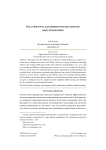
Delta Берроуза для древнегреческих авторов: опыт применения
Статья научная
В этой статье предпринята попытка эмпирически оценить эффективность метода измерения стилистической разницы, известного как Delta Берроуза, на материале древнегреческого корпуса. Эксперимент с корпусом из четырнадцати (и затем восьми) авторов подтвердил общую эффективность метода. Даже на небольших выборках в 1000–5000 слов решения Delta по большей части корректны, а ее ошибки связаны в основном с текстами, близкими в жанровом отношении. Именно жанровое сходство в обучающей выборке, а не количество слов или длина отрывка, оказывает наибольшее влияние на результат классификации. В спорных случаях, особенно если нет возможности использовать отрывки большей длины (10 000 слов и больше), составление шорт-листов предпочтительнее, чем назначение единственного кандидата. Подобные шорт-листы дают адекватное представление о ближайших стилистических соседях испытуемого текста, оставляя свободу исследователю в интерпретации результатов.
Бесплатно
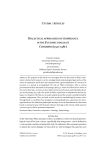
Dialectical approaches of temperance in the platonic dialogue “Charmides” (157c-158e)
Статья научная
The purpose of this article is to investigate how the discussion in Plato’s “Charmides” is formed with respect to a) the ontological and epistemological approaches of the virtue of temperance and b) how the transition from a general definition of a virtue to its presence to a person is accomplished. After a concise presentation of those discussed in the passage 156d-157c, where we follow Plato’s views on the soul to that time, we focus on how dialectics between Socrates and “Charmides” develops in the passage 157c-158e. Our article includes, apart from an introduction and an epilogue, two chapters. The first one is mostly analytical and the second is mainly formed by synthetic judgements. They are both crucial mostly for methodological reasons, since through them we can follow how temperance turns gradually into a question to be investigated and how the Athenian philosopher attempts to set the foundations of a discussion based on rational reason with the main reference focusing on the criteria which someone can use to prove that he possesses temperance.
Бесплатно

Early Theory of Language and Sophistic Argumentation in the Derveni Papyrus
Статья научная
The article discusses the impact of the early sophistic theories of language on the style and argumentation of the Derveni author and shows that he engages deeply with the problematics of semantics as discussed by the sophists, in particular the notions of correct speech, the proper meanings of words, synonymy and homonymy. Aristotle notes that the main device of the sophists is homonymy, the use of which permeates the style and argumentation of the text of the papyrus. According to Aristotle, the concept of homonymy includes general notions. Such an approach can already be observed in the Derveni papyrus, in particular regarding the notion of sameness (τὸ αὐτό) which the author uses in three different ways while playing with its polysemy: the sameness of one and many, the sameness of the opposite aspects of one process and the sameness of synonyms. The article suggests how this sophisticated approach of the author may correspond to earlier hermeneutic traditions related to the orphic theogonic poems.
Бесплатно

Elements in the Pre-cosmic Chaos in Plato’s Timaeus
Статья научная
In this paper I discuss the pre-cosmic state of elements in the Timaeus, when they existed as “vestiges of their own nature” (53b2). In the Timaeus, Plato distinguishes between two states of the elements: pre-cosmic (47e-53c) and cosmic (53c-57d). While the cosmic state of the elements has been extensively analyzed, the pre-cosmic state remains less clear and continues to be the topic of ongoing scholarly debate. Some scholars share the opinion that in the pre-cosmic state of the world the elements were bodies having certain stereometric forms (e. g. Archer-Hind, Taylor, Mortley, Mohr, Miller etc.). While other scholars believe that there were no bodies, but some forces and qualities placed in the Receptacle (e. g. Cornford, Zeyl, Waterfield etc.). I would like to demonstrate that the first interpretation is more consistent with Plato's overall thought than the second. Firstly, I examine the cosmic state of the elements, shaped by the Demiurge into regular polyhedra, in comparison with the pre-cosmic chaos, described as a "field" of heterogeneous, unbalanced forces. Secondly, I define the status of elements in the Timaeus, their role as causes of motion, and the nature of the Receptacle. And finally, I analyze the opinions of ancient commentators on the pre-cosmic chaos, including the presence of primary bodies there and the interpretation of "vestiges" of the elements. I came to the conclusion, that (1) Cornford's interpretation, which posits only forces and qualities in the pre-cosmic chaos, contradicts Plato's fundamental premise that physical movement requires a bodily substrate.; and (2) the description of the pre-cosmic state of the world, which suggests the presence of the elements as disordered and unformed bodies, was widely supported by the views of Plato's ancient commentators.
Бесплатно
![Etymology of the nickname 'Iskarit(h): the “one who saw a sign” [('I)sqar(^i)'^o/yisqar(^i)'^o] or the “one who slandered/betrayed a sign” [('I)sqar(^i)'^o/yisqar(^i)'^o]? Etymology of the nickname 'Iskarit(h): the “one who saw a sign” [('I)sqar(^i)'^o/yisqar(^i)'^o] or the “one who slandered/betrayed a sign” [('I)sqar(^i)'^o/yisqar(^i)'^o]?](/file/thumb/147103397/etymology-of-the-nickname-iskarit-hthe-one-who-saw-a-sign-i-sqar-i.png)
Статья научная
The article derives Judas's nickname 'Iskariṓt(h) from the Hebrew/Aramaic verb sāqar/seqar, and the noun 'ōṯ/'ôṯ (widely used in Biblical Hebrew and attested in the Talmud [=Aramaic 't/'t']), and interprets it as the “one who saw/gaze upon a sign” (cf., e.g., John 2:23, 4:48, 6:2,14,30 mentioning those who «saw signs» and came to be Jesus's followers; the verbs theōréō and ‘oráō used in these passages correlate with the verb sāqar/seqar, “to look (at), gaze, see”, and the noun sēmeîon (pl. sēmeîa) correlates with the term 'ōṯ/'ôṯ, “sign”). The ex hypothesi “positive” character of Judas's nickname possibly explains the evangelists' renunciation of its interpretation. As an alternative etymology of Judas's nickname 'Iskariṓt(h), one can derive it from the Hebrew/Aramaic verb šāqar/šeqar (“to lie, deceive, slander”, sc. “to violate (a treaty, etc.)”, “to betray” [the latter meaning is attested in Samaritan Aramaic]) and the same noun 'ōṯ/'ôṯ: the “one who slandered/resp. betrayed a sign”, i.e. the one who brought false evidence against Jesus (сf.: Matt. 26:59 ff.; Mk. 14:55 ff.). In Jn. 6:70, Jesus himself defines Judas with the term diábolos; this word can be interpreted as “slanderer”, “accuser”.
Бесплатно
Federico Fellini and Homer: Parallels and intersections
Статья научная
This essay is an outgrowth of the topic considered in the previous articles devoted to the image of ancient and modern Rome in Federico Fellini’s films, in which an attempt to analyse several Homeric motifs in Fellini Satyricon (1969) was made. The Italian film director acknowledged that he had dreamed to make a film based on the European ‘Book of the Books’, Homer’s duology – the Iliad and the Odyssey – about the heroes of the Trojan cycle of myths. Other coincidences in Fellini and Homer constitute the object of this study. Deliberate? Fortuitous? Archetypic? Fanciful? The very wording of the topic – Fellini Satyricon as Fellini’s Iliad – is provocative. The article identifies and discusses the parallels and intersections in the works of the two great masters – the Ancient Greek poet and the classic of Italian cinematograph, who lived almost three millennia apart.
Бесплатно
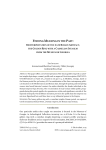
Статья научная
This paper offers a novel interpretation of the luxury golden ring with a carnelian intaglio depicting a woman's profile and an engraved Greek inscription, ΒΑCIΛICCΑ ΟΥΛΠIAΝΑ(Ζ)IA (or AΣIA E.A.), found in cist grave 14, in Mtskheta, Georgia, dated to the Roman period, the 3rd century AD. In consideration of the then contemporary political situation in the Mediterranean and Roman East, through the putting and interpreting sources into broad historical context, the author identifies the female individual as the Roman Empress Ulpia Severina. The very inclusion of royal woman within public propaganda during this period signifies her prominence within, and significance outside of, the imperial metropolis. This deliberate inclusion proved to the public that this empress was not mere figurehead but could have been a very influential person in the Empire.
Бесплатно

Статья научная
L'auteur de l'article tente de relier l'observation des relations économiques et commerciales développées par les Phéniciens dans la partie occidentale de la Méditerranée à une réflexion sur la situation dans laquelle se trouvaient les pays du Levant. On sait qu'à l'époque où la fondation de Carthage peut être hypothétiquement localisée, les centres phéniciens étaient sous pression politique, économique et militaire - principalement de l'Assyrie - bien que d'autres puissances, comme Damas, ne puissent être exclues. D'autre part, cependant, on sait que, par exemple, dans la science allemande l'absence d'acte fondateur de Carthage en Afrique du Nord a été soulignée, et les traces archéologiques laissées sur ce territoire semblent insuffisantes pour concilier les relations littéraires conventionnelles avec l'acte fondateur. de Carthage à la fin du IXe siècle av. L'intention de cet article est de tenter de montrer les enjeux à partir desquels il convient d'envisager la réinterprétation des événements rapportés dans le contexte de la fondation de Carthage. Cette démarche servirait à réviser les connaissances scientifiques existantes sur la chronologie de la fondation de Qarthadasht et pourrait, par conséquent, contribuer à montrer que la fondation de Carthage s'inscrit dans une période postérieure - c'est-à-dire la fin du VIIIe ou le début du VIIe. siècle avant notre ère.
Бесплатно

